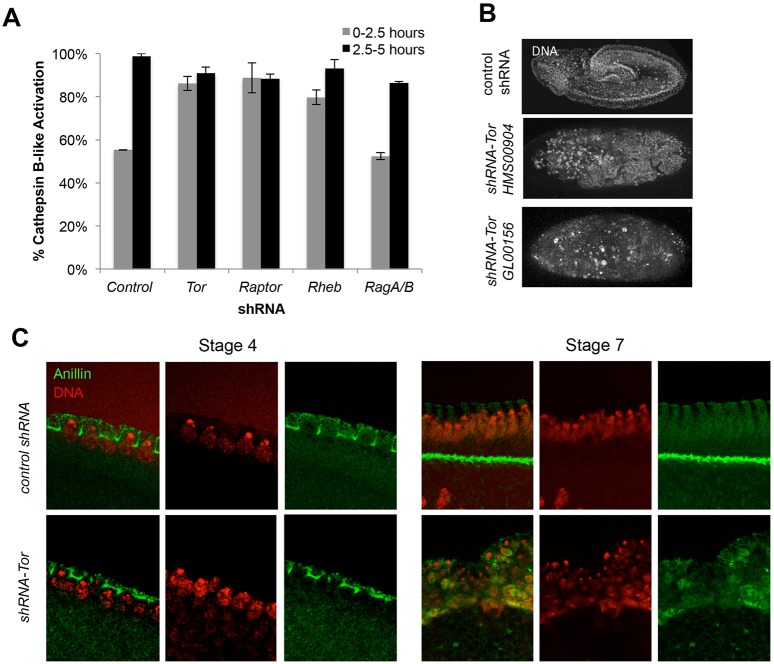Fig. 2.
Tor is necessary for yolk catabolism. (A) The percentage of active Cathepsin B-like proteinase in shRNA-expressing embryos pre-cellularization (0-2.5 h) and post-cellularization (2.5-5 h). Data are represented as the s.d. of three biological replicates. (B) Phenotype of stage 7 shRNA-Tor embryos using two different hairpins, showing that shRNA-Tor embryos display significant DNA fragmentation post-cellularization. (C) Staining of stage 4 (left) and stage 7 (right) shRNA-control and shRNA-Tor embryos with the cellularization marker anillin, showing clumping of nuclei around the periphery of the embryos with no clear cellularization in shRNA-Tor embryos.

